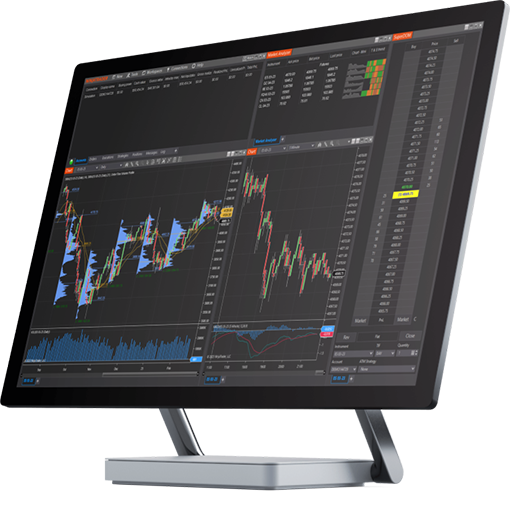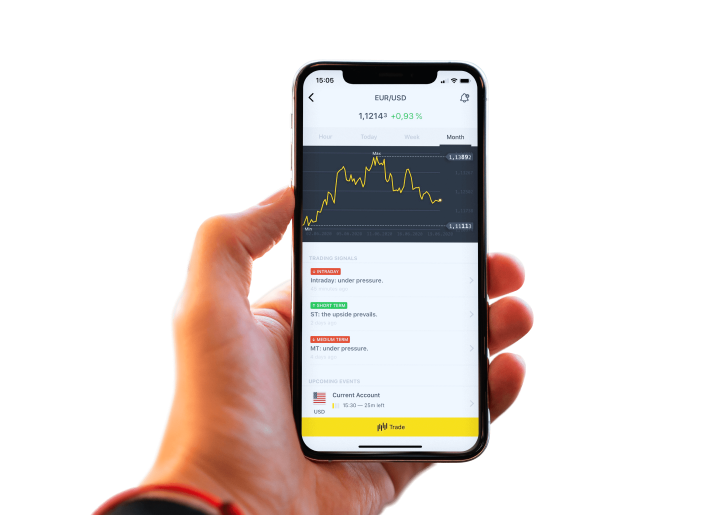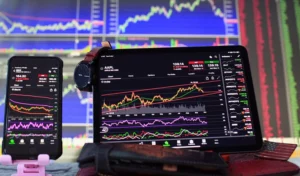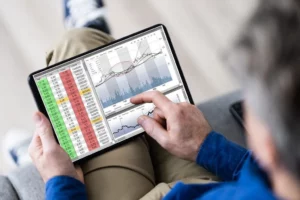In 2025, professional futures traders demand more than low commissions or fast order execution. They seek precision, stability, and customization. The right trading platform must handle high-volume data, support complex strategies, and integrate seamlessly with analytical and automation tools.
Professionals use futures to hedge exposure, speculate on commodities, or manage risk across equities, indices, and currencies. Because the market runs nearly 24 hours a day, reliability and execution speed are essential. This article focuses on identifying the best platforms for professional use — systems capable of supporting institutional-level decision-making without unnecessary complexity.
What Defines a Professional Futures Trading Platform
A professional-grade futures trading platform combines advanced functionality, low latency, and transparent pricing. It allows efficient trade execution, offers in-depth analytics, and maintains a robust infrastructure to minimize downtime. Below are key factors that define a professional system.
| Feature | Description |
| Execution Speed | Millisecond-level trade execution to avoid slippage. |
| Market Access | Direct connectivity to CME, ICE, and Eurex exchanges. |
| Risk Management | Tools for hedging, alerts, and margin tracking. |
| Analytics | Real-time charting, volume profiling, and backtesting. |
| Customizability | Script-based indicators, automation, and third-party integration. |
Professionals often operate multiple strategies simultaneously — such as spread trading, arbitrage, or trend-following systems. Therefore, the platform must handle high-frequency data streams while keeping interface responsiveness consistent.
Key Qualities of a Professional Platform
- Latency Control — Every millisecond counts in fast markets. Reliable servers and proximity hosting reduce delay.
- Order Execution Variety — Professionals rely on advanced order types such as OCO (One Cancels the Other), trailing stops, and iceberg orders.
- Capital Efficiency — Flexible margin structures and accurate position monitoring are vital for maintaining exposure balance.
- Data Transparency — Access to raw tick data and historical depth improves both strategy testing and live monitoring.
- Stability Under Load — During volatile sessions, execution systems must stay operational without lag or crash risks.
Some traders also value multi-asset integration, allowing futures, options, and spot instruments to coexist within one workspace. That flexibility improves hedging precision and supports portfolio-level analysis.
Top Futures Trading Platforms in 2025
Choosing the right trading environment depends on execution goals and analytical preferences. Each of the following platforms offers a professional-level setup designed to accommodate active traders, algorithmic developers, and institutions.
Interactive Brokers
Interactive Brokers remains one of the most recognized multi-asset brokers for futures trading. The Trader Workstation (TWS) provides deep market access, advanced charting, and direct order routing. Professionals appreciate its cross-market exposure — from commodities to financial indices — and strong liquidity access.
| Feature | Specification |
| Commissions | Starting from $0.25 per contract |
| Minimum Deposit | $0 for standard accounts |
| Data Feeds | Real-time, exchange-specific |
| API Access | Yes — supports Python, C++, and Java |
Its major advantage lies in execution reliability and integration with algorithmic systems via IBKR APIs. Margin policies are competitive, with real-time updates and risk analysis displayed within the account window.
Still, beginners may find the interface complex due to the breadth of features. Professionals, however, appreciate its precision, multi-leg order support, and institutional-grade reporting.
NinjaTrader
NinjaTrader is designed primarily for futures and forex traders requiring extensive analytical depth. Its ecosystem combines a robust charting interface with full automation support, enabling script-based and strategy-driven execution.
- Advanced Charting: 100+ technical indicators with customization.
- Strategy Builder: Enables algorithmic strategy creation without full coding.
- Market Replay: Allows simulation of past sessions for testing order timing.
- Low-Cost Futures Data: Direct routing to multiple FCMs with competitive commission models.
The software supports third-party integrations and plug-ins, making it ideal for professionals who prefer complete control over analytical tools. NinjaTrader’s desktop version is especially known for its stability during volatile sessions and its performance when handling high-frequency tick data.

TradeStation
TradeStation is a strong choice for professionals who value systematic trading and historical testing capabilities. Its EasyLanguage scripting tool is one of the most established in the market, allowing users to create, backtest, and optimize strategies directly within the platform.
| Feature | Description |
| Minimum Deposit | $0 for online accounts |
| Commission | $0.50 per futures contract (per side) |
| Data Access | Real-time and tick-level historical data |
| Key Advantage | Advanced backtesting engine with walk-forward optimization |
TradeStation integrates broker and platform services into one environment. Professionals can test strategies over decades of data with adjustable parameters, then execute them live using the same interface. It supports automated orders through both native and third-party APIs, ensuring flexible workflow integration.
Another important feature is RadarScreen, a real-time scanning tool capable of monitoring hundreds of instruments simultaneously. This allows professionals to detect momentum shifts or volatility spikes without switching screens — ideal for high-intensity intraday work.
TD Ameritrade
TD Ameritrade, through its thinkorswim platform, has built a reputation for precision analytics and detailed visualization. While often recognized for options trading, its futures segment caters effectively to professionals needing high-resolution charts and deep analytical layers.
| Metric | Value |
| Commission | $2.25 per contract (per side) |
| Market Access | CME, CBOT, NYMEX, and COMEX |
| API Support | Advanced scripting and external automation available |
| Key Feature | Multi-timeframe analysis and conditional orders |
The platform provides over 400 technical studies, flexible scripting tools, and access to paperMoney® for simulation. Professional users rely on its robust risk analysis functions, customizable alerts, and visualization of implied volatility and delta shifts.
Although its commission model is higher than specialized futures brokers, thinkorswim compensates with its analytical interface and stability during peak market hours. Many institutional traders use it as a research and visualization tool while executing through dedicated FCMs.
Optimus Futures
Optimus Futures specializes in professional-grade execution infrastructure. It offers access to multiple futures clearing merchants (FCMs) and supports various third-party platforms like Rithmic, CQG, and Trading Technologies. This structure gives traders full control over routing preferences, cost management, and latency.
| Specification | Details |
| Commission Range | Varies by volume, starting from $0.25 per contract |
| Trading Platforms | Rithmic, CQG, TT, MetaTrader 5, and others |
| API Availability | Yes, with FIX and native SDK connections |
| Focus Area | Institutional connectivity and low-latency data feeds |
Optimus Futures is ideal for professionals managing automated or high-frequency systems. It prioritizes transparency, giving direct visibility into margin requirements and market depth. Since it supports multiple interfaces, users can select the software that best matches their analytical or execution needs.
Its multi-broker setup also helps diversify operational risk — if one data provider experiences latency or outage, switching to another feed can be done instantly.
How to Choose a Futures Trading Platform
Selecting a trading system depends on trading frequency, capital scale, and the complexity of deployed strategies. Professionals rarely rely on a single criterion. Instead, they compare execution costs, connectivity, margin flexibility, and analytical capacity.
A useful way to assess platforms is to group them by technical performance, financial terms, and integration possibilities. Below is a comparative snapshot:
| Category | Technical Performance | Cost Structure | API & Integration |
| Interactive Brokers | High | Moderate | Strong |
| NinjaTrader | Excellent | Low | Strong |
| TradeStation | Strong | Medium | Strong |
| TD Ameritrade | Strong | High | Limited |
| Optimus Futures | Excellent | Variable | Excellent |

Evaluating Commission Structures and Margin Requirements
Professional traders prioritize precision in cost accounting. Every contract and exchange fee directly influences profitability. Futures brokers usually charge per-side fees, often between $0.25 and $2.50. The difference might seem minimal, but for those executing hundreds of trades daily, it becomes substantial.
Key aspects to review:
- Per-Contract Rate: Check both commission and clearing fees.
- Exchange Rebates or Pass-Through Fees: Some brokers forward exchange rebates for high-volume clients.
- Margin Requirements: Intraday and overnight margins differ widely; lower intraday margins increase exposure but also raise risk.
- Interest on Cash Balances: Competitive brokers sometimes offer yield on unused collateral.
Professionals often maintain accounts with two or more brokers to balance cost efficiency with infrastructure reliability.
Comparing Order Types and Risk Controls
Order versatility is another differentiator among advanced platforms. For professional futures traders, the ability to automate protective actions can determine capital longevity.
Essential order types and tools include:
- Bracket Orders: Automatically combine target and stop orders with a single entry.
- OCO (One Cancels the Other): Reduces manual intervention during high volatility.
- Trailing Stops: Adjust dynamically based on market movement.
- Position Auto-Liquidation: Automatic closeout at preset drawdown levels.
Risk controls extend beyond simple stop orders. They include account-wide exposure limits, volatility-based position sizing, and trade restrictions during scheduled economic releases. A proper system should allow these parameters to be customized per instrument or portfolio.
Checking Compatibility with Third-Party Tools and APIs
Professional traders often integrate multiple systems — data feeds, execution modules, analytics dashboards, and proprietary algorithms. Compatibility with third-party tools and APIs ensures this workflow remains efficient and synchronized.
Platforms with open architecture allow external software to exchange order data, position information, and market updates in real time. This is vital for algorithmic trading desks and quantitative analysts who design custom risk engines or trading models.
Key aspects to consider when evaluating API compatibility:
| Feature | Explanation |
| API Protocols | REST, FIX, or WebSocket standards enable high-speed data transmission. |
| Latency and Throughput | Execution systems must process multiple order streams without lag. |
| Historical Data Access | APIs should support direct queries for backtesting datasets. |
| Security Standards | SSL encryption and IP whitelisting protect automation endpoints. |
Platforms such as Interactive Brokers, NinjaTrader, and Optimus Futures excel in this area. They permit integration with Python, C++, or Java-based systems, allowing advanced customization. Some traders also link these APIs to machine learning modules or cloud-based optimization tools for predictive analysis.
A practical approach is to maintain a modular setup: charting handled by one platform, order routing by another, and data storage through an external server. This architecture minimizes single-point failures and allows upgrades without interrupting execution.
Advanced Tools for Professional Traders
At the institutional level, execution quality depends not only on hardware or network speed but also on analytical precision. Advanced features separate standard trading terminals from professional systems. The following components play a central role in futures trading efficiency.
Algorithmic and Automated Trading Capabilities
Automation has become standard among high-frequency and systematic traders. A professional futures trading system should include either native algorithmic execution tools or direct API access for custom automation.
Key functionalities include:
- Strategy Backtesting: Testing with tick or one-minute data to evaluate robustness under different volatility levels.
- Walk-Forward Optimization: Avoids curve-fitting by validating parameters across separate datasets.
- Event-Based Triggers: Execution based on economic data, volume spikes, or volatility thresholds.
- Execution Algorithms: TWAP (Time Weighted Average Price), VWAP (Volume Weighted Average Price), and iceberg algorithms for large order concealment.
Platforms such as TradeStation and NinjaTrader excel here — the former via its EasyLanguage, and the latter through NinjaScript. Both support full automation and strategy monitoring without third-party software.
For professionals managing multiple accounts or strategies, automation also ensures consistency and minimizes emotional bias. However, each system must include real-time error handling and execution logs to prevent unintended orders under high volatility.
Depth of Market (DOM) and Order Flow Analysis
Depth of Market (DOM) visualization allows professionals to see real-time liquidity across bid and ask levels. This feature helps anticipate short-term price movement and assess order absorption.
| Tool | Function |
| DOM Ladder | Displays live order book levels and market depth. |
| Volume Profile | Shows traded volume at specific price zones. |
| Cumulative Delta | Analyzes buying vs. selling pressure over time. |
| Order Flow Heatmap | Visualizes liquidity clusters and execution imbalance. |
Professional traders use DOM in conjunction with order flow tools to detect spoofing patterns or hidden liquidity. For instance, sudden withdrawal of resting orders may hint at directional momentum.
Systems like Jigsaw Trading or NinjaTrader’s DOM+ module offer granular visual cues and customizable alert thresholds. This is particularly useful for short-term scalpers and spread traders who rely on microstructure signals rather than chart indicators.
Custom Indicators and Scripting Support
Professional users rarely depend on default indicators. They require the ability to design and modify analytical tools for strategy-specific metrics.
Scripting environments such as EasyLanguage (TradeStation), NinjaScript (NinjaTrader), and MultiCharts PowerLanguage allow direct access to market data streams. These scripts calculate non-standard values — like liquidity imbalance ratios, volatility-weighted moving averages, or adaptive delta signals.
When selecting a platform, traders should confirm:
- Language Flexibility: Whether it supports Python, C#, or proprietary syntax.
- Data Sampling Rates: High-frequency data support ensures indicator accuracy.
- Testing Infrastructure: Built-in simulators validate new code without risking live capital.
- Community and Library Access: Ready-to-use scripts reduce development time.
In professional environments, coding efficiency equates to faster strategy deployment. A well-documented scripting API also makes collaboration easier within quantitative teams.
Common Mistakes Professionals Avoid
Professional traders differ from retail participants mainly in their discipline and risk management consistency. Even with the best futures platforms, poor operational habits can undermine performance.
Here are common pitfalls that professionals consciously avoid:
- Over-Optimization: Excessive parameter fitting in backtests leads to unrealistic expectations.
- Ignoring Latency Impact: Delayed data feeds distort algorithmic timing accuracy.
- Neglecting Margin Monitoring: Underestimating exposure during volatile sessions risks forced liquidation.
- Lack of Failover Systems: Relying on a single broker or server increases operational risk.
- Skipping Log Audits: Ignoring system logs prevents identification of recurring execution errors.
Professionals also avoid making spontaneous adjustments during live sessions. Instead, they use pre-tested contingency protocols — such as switching from automated to manual mode under defined volatility thresholds. This keeps trade execution controlled even during unpredictable market conditions.
Frequently Asked Questions
Which futures platform is best for automation?
NinjaTrader and TradeStation both offer powerful scripting environments and integrated backtesting tools suited for fully automated strategies.


